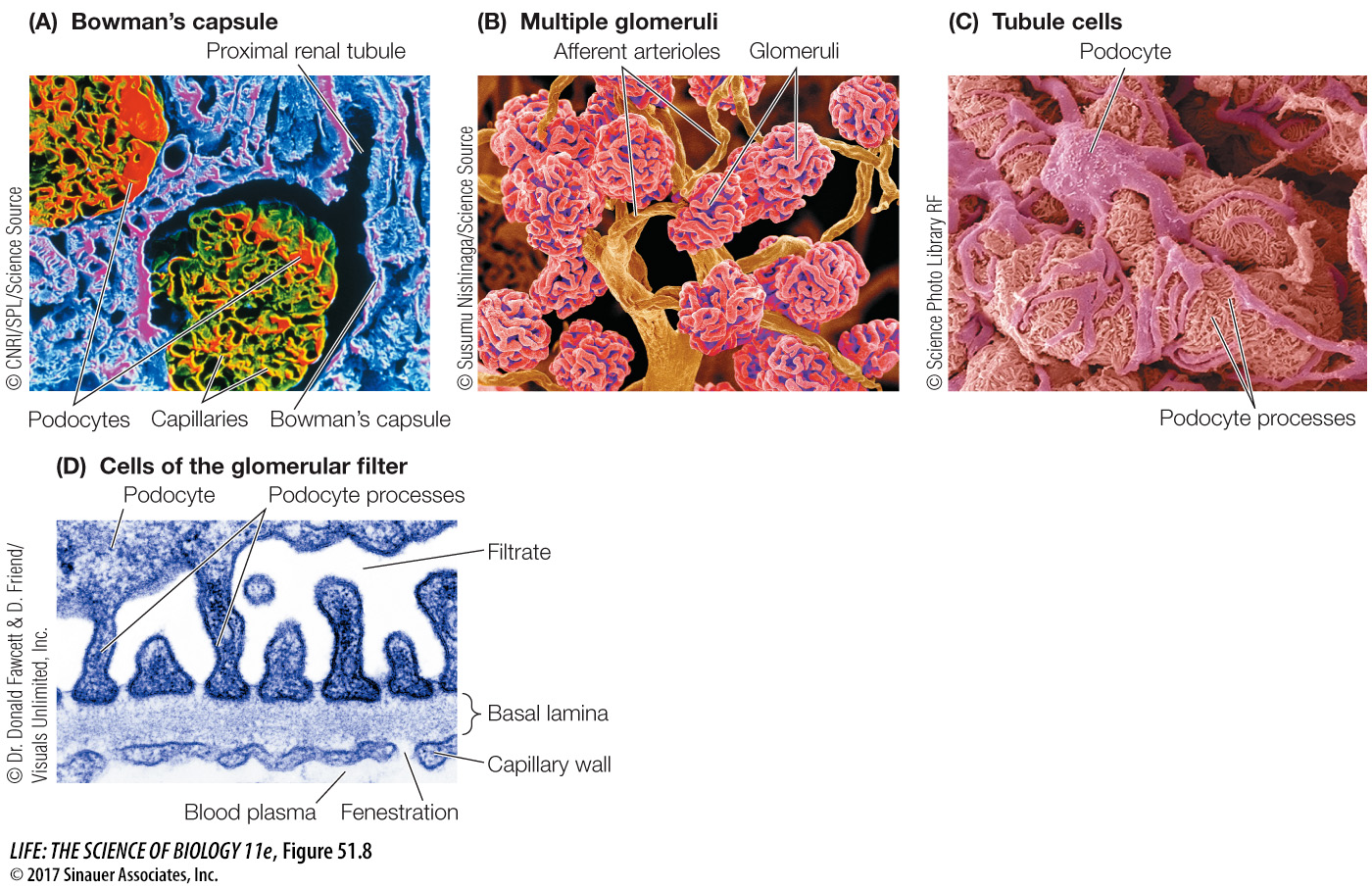Blood is filtered into Bowman’s capsule
The renal tubule begins with Bowman’s capsule (see Figure 51.7), which encloses the glomerulus (Figure 51.8A and B). The glomerulus appears to be pushed into Bowman’s capsule much like a fist pushed into an inflated balloon. The cells of the capsule that are in direct contact with the glomerular capillaries are called podocytes (Figure 51.8C). These highly specialized cells have numerous extensions, each with hundreds of fine processes. The podocytes wrap around the capillaries so that their processes interdigitate and intimately cover the capillaries.

The glomerulus filters the blood, producing a fluid (the renal filtrate) that lacks cells and large molecules. The walls of the capillaries, the basal lamina of the capillary endothelium, and the podocytes of Bowman’s capsule all participate in filtration. Fenestrations in the walls of the capillaries (see Key Concept 49.4) allow water and many solute molecules, but not red blood cells, to pass through. The meshwork of the basal lamina and the spaces between the processes of the podocytes are even finer and prevent large molecules from leaving the capillaries (Figure 51.8D). The arterial pressure of the blood entering the permeable capillaries causes the filtration of water and small molecules out of the glomerular capillaries and into the Bowman’s capsule. The glomerular filtration rate is high because blood pressure in the glomerular capillaries is high, and because the capillaries of the glomerulus, along with their covering of podocytes, are more permeable to water than are other capillary beds in the body.
You will recall that marine bony fishes produce very little urine. The explanation for this is that their kidneys have evolved to have few if any glomeruli, whereas the kidneys of freshwater fishes have many glomeruli.